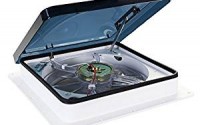How to Re-String an RV Window Shade
How To Re-String a Pleated RV Day/Night Window Shade
[WPXperVideo id=13 ]
Most RVs have the same type of pleated day/night shades that we do every Now and then they get very loose and you can tell that the cord is about to break. Today we’re going to restring this one with new cord. The only spare part you’ll need for this job is a length of replacement cord. We keep a supply on hand because we’ve experienced cord breakage before. It doesn’t really matter what color you have. This is green because we have green blinds but we’ve used beige cord as well and you can’t even tell. This type of cord is commonly available at a fabric store. You can also buy it directly from the manufacturer of the pleated blinds.
Let’s start by unscrewing and removing any decorative window treatments known as Lambrecht winds. Now we can see the entire pleated blind; the strings are held in place at the bottom by these screws and if we look at this one we can see that the string has frayed and it’s just about to break. Unscrew the attachments that hold the strings in place. Once those are loose the only thing holding the blind in place are two clips at the top. Simply unclip it and remove it from the wall. Once we have the blind off the window we’re going to dismantle it but you want to pay particular attention to exactly how its strung, especially if you don’t have the stringing instructions from the manufacturer.
We’re lucky in this case because this is one of the narrow bedroom window blinds that only has two strings, one that runs up each side. Wider windows have four strings, one on each side all the way over the edge and two that run up the middle. These wider window blinds have a considerably more complicated stringing pattern so be sure to pay careful attention if you’re doing one of these. Let’s start by removing the handles that you use to open and close the blinds. Using a small flat blade screwdriver pry open the attachment that connects the cord to the wall. Now pry out the plastic end caps on both sides of the blinds, there are three on each side, and then simply pull them off. We’re now ready to disassemble the blind.
Starting up at the top you can simply slide the aluminum track off of the blind. Once the top track is removed you can see where the strings connect at the top of the blind to a small spring. If you don’t have a diagram from the manufacturer showing the pattern that the string should follow through the blind now is the time to carefully draw a diagram as you disassemble it on a white sheet of paper. We’re simply going to draw the path that the cord takes across the top of the top section of blinds and down to the center that traces the path across and down to the center track right here. Now let’s slide the lower half of the pleated blind off of the upper half. Once we’ve slid those apart we can see that our cord takes an X pattern, with the right side crossing over to the left and vice versa. Let’s draw that on our diagram to make sure we know the correct path for the cord to take in the middle of the blind.
Now slide the lower track off the bottom of the blind. We can now see the rest of the path that the cord takes come straight down through the lower section and crosses over to the opposite side. Let’s take our diagram and make sure that we show that the cord then comes from the center down to the bottom but crosses out to the opposite side since restringing the blind correctly is so important. I’ve redrawn this to make it as clear as possible exactly the path that the cord will take. Again we can see from top to bottom that our cords connect at the spring at the very top go straight down the sides of the upper section of the blind, cross in the middle, go straight down through the lower section of blind and cross again at the bottom going out to the attachment points at each side. This seems like a simple stringing pattern.
Once you’ve taken the cord out if you don’t remember exactly what it should be you won’t be able to put it back together correctly and the wider blinds that use four vertical lines are much more complicated and require great care before dismantling. This is a diagram we created for the large blinds in our motorhome. There are several different ways to string larger blinds. Be sure you know how yours are done before you dismantle them. Now we can pull the cord out of the blinds. Now we can see the two sections of cord connected in the middle by the spring even though only the left section is particularly worn we generally replace both sides at the same time. If you’re going to go to the trouble of dismantling the blind you might as well put in brand new cord on both sides. Now take a brand new length of cord and lay it out alongside the old cord to get the length exactly the same it’s a good idea to cut the new cord about six inches longer than the old one, leaving room to tie knots and just in case you’re a little bit off. We now have two brand-new lengths of cord cut about six inches longer than the old cord. Even for this small blind these cords are nearly six feet long.
Now either cut or untie the old cords from the spring. Once you’ve removed the old cord from the spring tie one end of each of the new cords to each side of it. Now we’re all set to reinstall the cord into the blind. When we look at our stringing diagram we see that the cord goes straight across the top and straight down through the upper section of the blind. Holding it compressed in your hand with the spring on top and threading each cord down each side kind of like threading a needle works out real well. Again following our diagram cross the cords between the upper and lower sections of the blind and then thread the cord through the lower section of the blind exactly as you did in the upper section. Now you can see we have our spring on top and the top section threaded our quartz criss-crossed in the middle and our lower section threaded but now we have to connect the upper and lower sections of the blind. Here’s how to reattach the two haves of the blind. Take the upper half and the lower half and slide them along each other until you can slide one inside the other, hold the cords taut and make sure that they lie properly inside the track along the bottom of the upper section and now slide the lower section into the upper section pulling the excess cord as you go.
Now the upper and lower sections are reconnected with the spring on top and the two cords coming out the bottom. Our diagram reminds us that at the very bottom of the blind the cords need to cross back to the other side. Let’s take our cords cross them, left to right and right to left and then slide our lower track into place holding both the cords and the pleats of the blind out of the way. Slide the lower track onto the lower section of the blind. This is how our blind should look at this point. We have the spring centered up on top and a cord sticking out of each end now slide your upper track into place above the top of the spring. Now reinstall the plastic caps at each end, of course make sure that you thread the cord through the hole in the end cap on the lower section of the blind. Now reinstall the two handles on the front of the blind and check to be sure that the cords are just about the same length on each side. If they’re not it means the spring isn’t centered at the top and you simply need to shimmy the cord through a little bit at a time to try to get the spring as centered as possible, otherwise the cord on one side might not reach in preparation for reinstalling our fully reassemble blind.
We’re going to attach our wall anchors to the cord at each end of the lower section of the blind, take the cord and lay it along the track on the side of the anchor and then push the smaller section back in. Pull that all the way up to the bottom of the blind so it’s fairly tight. Do this on both ends and what this does is prevent the blind from going open while you’re installing it. Each of these clips sits inside this track at the top of the blind so to reinstall it simply tip the blind forward put those clips into the track and clip up in the back. Once the back is snapped into place the blind is locked. Holding one chord at a time, slide the wall anchor down until it’s in place and screw it partway in and now do the same thing on the other side. The nice part about these wall clips is that no knot is needed when you tighten them down. They clamp down on the cord and hold it in place making it easy to adjust. The way these cords work is the tighter the tension is on the cord the stiffer the blind moves so if it falls down and doesn’t stay in place the cords need to be pulled a little bit tighter. If it’s too difficult to move the cords need to be a little looser the goal is to have the blind move as easily as possible without falling down so that it stays in place where you put it.
Once you have the tension on the cores exactly right make sure you’ve tightened the wall anchors firmly in place, cut off the excess on each side and the blind is remounted. Make sure your blind is centered over the window. A little tap on the end will adjust it horizontally. Just reinstall any window treatment and you should have it made in the shade.



